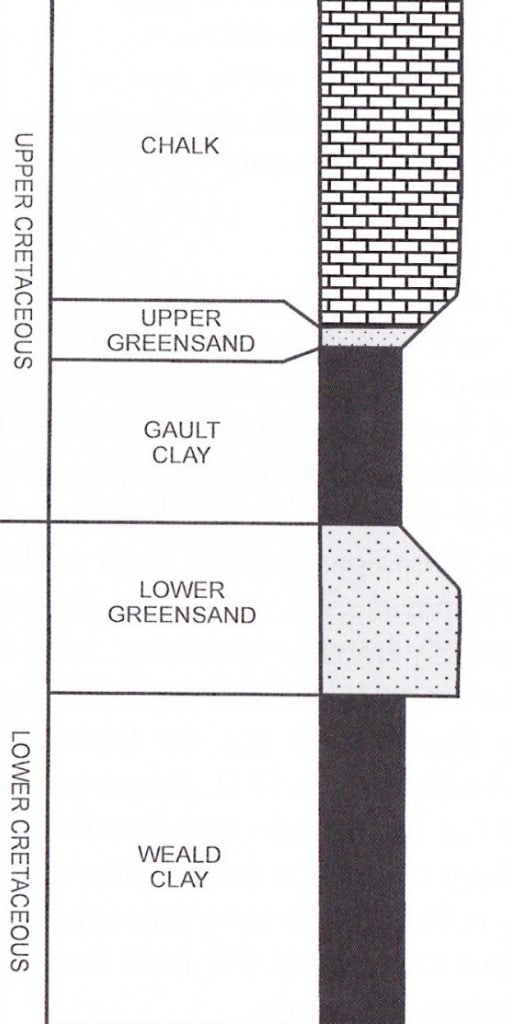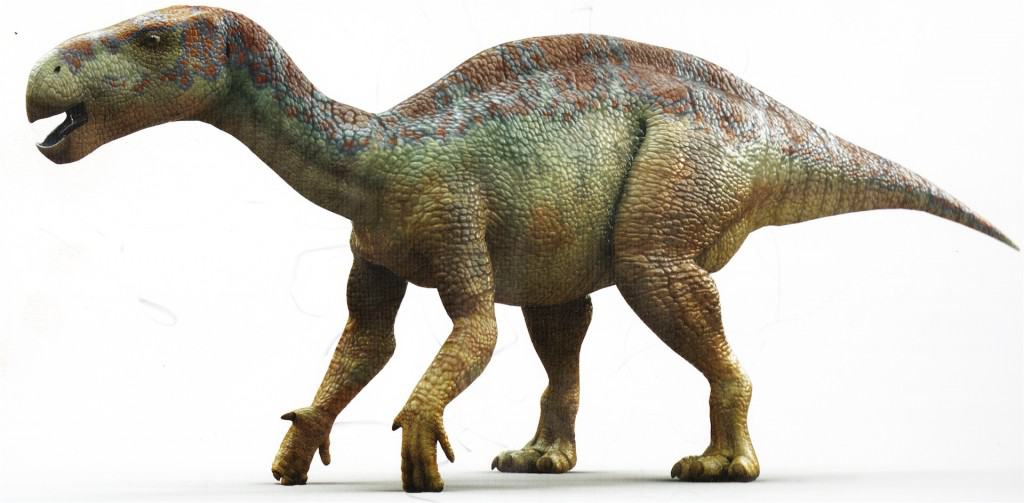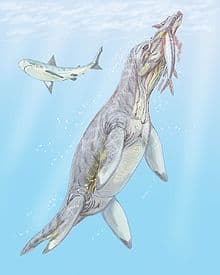The geology of Mole Valley was formed when the earth’s climate was warm and sea levels were high.

Between 65 and 100 million years ago southern England lay under a warm sea. The chalk of the North Downs was formed from the bodies of millions of marine plants and animals that lived there. A spectacular collection of fossil fish, ammonites and sea urchins from this sea has been found in the chalk quarries of Ranmore.
Between 110 and 120 million years ago huge migrating underwater sand dunes covered this area. They were buried and cemented to form the greensand of the hills to the south of the town.
Over 120 million years ago northern Europe was covered by a great lake. Sediment from the rivers flowing into the lake from the swampy plain that covered southern England eventually formed the thick Wealden clay that is found to the south of Dorking. The remains of the dinosaurs which roamed the Dorking area [then] have been found in the clays of Capel and Ockley.
The rock layers of Mole Valley 120 to 65 million years ago – oldest layers on the bottom of the diagram


A fossilised Iguanadon tail was found during the digging of a well shaft in the clay at Broomells Farm, Capel in 1891. Another has been found at Redlands, South Holmwood. They were about 9 metres long with webbed hoof-like fingertips, a thumb-claw and a wide beak. It is part of an early Cretaceous creature that had webbed hoof-like fingertips and a wide beak. The distinctive spike on its thumb was mistakenly thought to have been a nose horn by early fossil hunters. It was rare amongst dinosaurs in being able to chew using the movement of its upper jaw and grew to about 9 metres long. Many fossilised remains have beenfound in Wealden areas. In 1825 it became only the second giant prehistoric reptile to be given a name – after Megalosaurus – when Gideon Mantell dubbed it ’iguana tooth’. It was one of the three species that inspired the geologist Richard Owen to give these creatures the name ‘dinosauria’, meaning ‘greatly fearful lizards’.

In 1983 amateur fossil hunter William Walker discovered a huge bone at the Smokejack clay pits at Walliswood near Ockley. The previously unknown species was named after its discoverer and the fossilized skeleton is now on display at the Natural History Museum. Baryonx (‘heavy claw’) Walkeri was a rare fish-eating dinosaur; fish scales were found in its stomach.

© Dmitry Bogdanov
The fossilized cranium (skull) of Polyptychodon interruptus which you can see in the Museum is one of the Museum’s rarest exhibits. It was found in the Dorking chalk pits at the foot of Box Hill. The Polyptychodon was a late Cretaceous carnivorous sea creature of the pliosaur family. It would have been about seven metres long and the cavities in the skull indicate huge eyes. Its long jaw can also be seen.
Dorking Museum acknowledges and thanks the assistance of The Curry Fund of the Geologists’ Association for their donation of a case to the Museum.
Next : Archaeological Discoveries
Last : Why is Dorking where it is?

